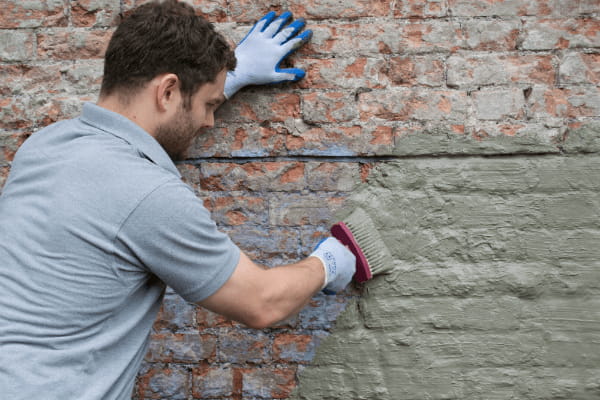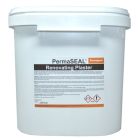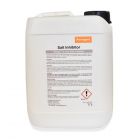Help & Advice Articles, Videos and How-to-Guides
Filter Articles
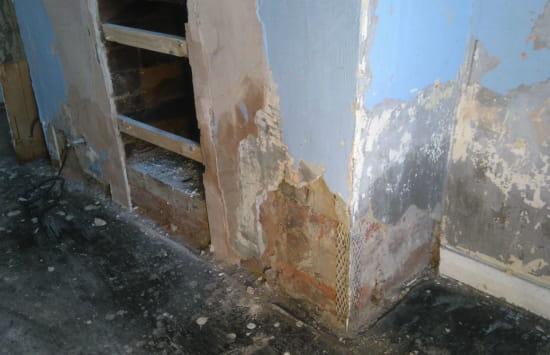
How to Fix a Damp Chimney Breast
Chimney damp is a common and annoying problem. We regularly get questions here at Permagard about what’s causing damp patches around a chimney and how to stop it.
In this guide we look at the signs, potential causes and fixes of a damp chimney.
Signs of chimney damp
Common symptoms of chimney damp are similar to regular damp but will be isolated solely around the fireplace or chimney breast. Signs include:
- Yellow or brown marks on the walls
- Damp patches that come and go as the weather changes
- Flaking paint
- Rising damp tidemark
These signs can be evident, downstairs around the breast, in the above room and the attic.
Visual chimney damp problems are usually easy to identify, however finding the cause of the damp is often more difficult.
Ladder safety
In order to thoroughly check your chimney and building to find the root cause of the problem, this may involve the use of a ladder. You should only use ladders in situations where it is safe to do so, and you have the necessary training to safely complete the job. If you do not feel 100% confident or don’t have another person to supervise and steady the ladder, we would always recommend hiring a trained professional to carry out the investigation/survey on your behalf.
Causes of chimney damp
Chimney damp is normally caused, diagnosed and fixed in a similar way to other damp issues. However, chimneys can experience some other additional potential damp causes.
As always, the cause of the chimney damp needs to be addressed before damp proofing can begin. Your checks will have to be thorough as in some situations it can be a little hard to spot. Remember there can also be more than one cause.
The visual signs of chimney damp can provide a good indication of where to start looking for the cause.
Damp caused by chimney stack issues
Burning coal and wood releases tars and salts that then settle into the chimneys of older homes. When this process occurs over decades, it can cause unsightly chimney damp.
Open or broken chimney pots
The first thing to identify is whether your chimney pots are open-topped or capped. If they are open-topped and your chimney is not in use it’s possible that rain or moisture is entering through the opening and causing damp in your chimney. If your chimney is capped, examine the cap for signs of damage.
In the case of open or damaged chimney pots, add a chimney cowl or cap to protect the stack from letting in moisture. It is important that you do not seal your chimney at the top, whether the chimney is in use or not as you want to encourage airflow.
Inadequate chimney stack ventilation
We often get asked ‘can a blocked chimney cause damp’? The answer is yes, especially if there is little or no ventilation.
If your chimney is blocked up and is capped and sealed at the top, the lack of ventilation could be causing chimney condensation to build up in the void, meaning that when your house warms up, condensation collects and forms damp on the chimney breast surface.
It is important that unused chimneys are vented at both the top and the bottom, to allow a constant flow of air. At the top, the best option is to fit a terracotta cowl or elevated cap to the chimney pot, which keeps the rain out but allows the air to enter. In the room below, it is necessary to have chimney vent installed just below ceiling height.
Cracked chimney stack mortar
If you have both capped chimney pots and sufficient ventilation, next check for any cracks in the pointing of the chimney stack. Damaged pointing allows water and moisture to enter the stack and will quickly cause damp in the chimney. If this is the case, the chimney stack and surrounding brickwork will need to be repointed before the damp issue can be resolved.
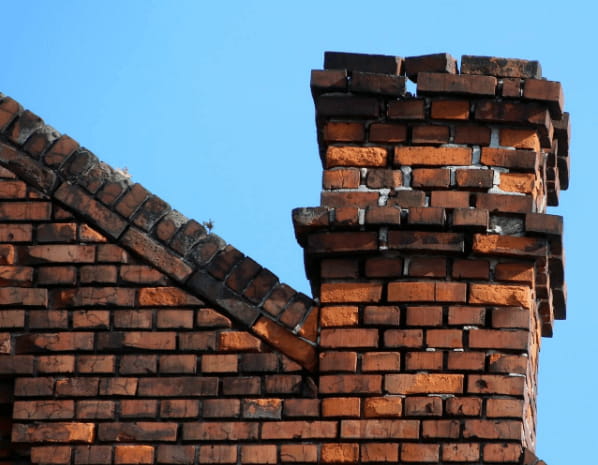
Shared chimney
If you share a chimney with your neighbour, it is possible that recent home renovations such as the installation of a wood burner may be causing damp in your home due to poor chimney flue installation or inadequate ventilation. The best way to identify this problem is to speak to your neighbours. This may become a problem for them in future too so the earliest this issue can be identified the better, for both parties.
Building faults that can cause chimney damp
Damp patches on the chimney breast, brown or yellow marks on the walls and ceilings surrounding the chimney often point to damage caused by a water leak or building faults such as inadequate guttering, missing roof tiles, poor flashing details and absorbent masonry. More on this later.
After checking the chimney itself, the next port of call is to assess the surrounding area. As moisture travels from wet to dry areas, the source of the chimney damp doesn’t necessarily need to be on the stack itself.
Penetrating damp
Chimneys on older properties have been exposed to the weather for a long time. This can lead to a degradation of the brickwork and also the mortar joints often making them more absorbent or even cracked leading to water ingress to the chimney leading to damp getting in and possibly tracking to internal surfaces.
If penetrating damp is identified as the cause, the chimney should be inspected and any necessary repairs carried out. To prevent further water ingress, we recommend applying a masonry water repellent to the entire exposed chimney. This will protect the structure from weathering for many years - and if you use MicroShield Ultra, that protection can last upwards of 25 years.
Weak or cracked lead flashing
Used to seal joints, ensure you check the flashing around the chimney stack for any damage. This is best identified from inside the attic or roof space. Look for signs of daylight coming in around the stack as well as any signs of water leakage or a build-up of hygroscopic salts; all these point to weak or cracked lead flashing. Learn more about hygroscopic salts.
Flashing will need to be repaired or replaced before damp proofing the chimney can begin. Either hire a professional or, if you feel confident, use DIY flashing tape such as No Nonsense Flashing Tape to repair the damage.
Damaged or missing roof tiles
Examine your roof for broken or missing tiles – remember to check your entire roof and not just the surrounding chimney stack area. Any defective tiles will need to be replaced to ensure that your home is protected from the elements.
Broken or blocked gutters
Broken or blocked gutters allow water to collect in unwanted areas and enter through any cracks in the mortar causing numerous damp and structural problems throughout the home, including chimney damp. This problem can be fixed by cleaning, replacing or moving guttering so that downpipes drain away from the property.
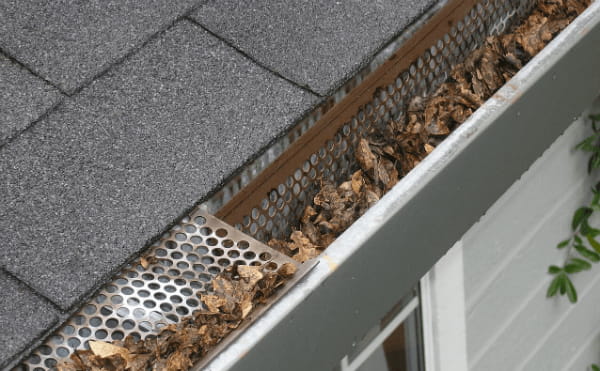
Chimney damp caused by rising damp
If you have stains and damp marks around the base of the chimney breast, no more than 1.5m high and salt tidemark, then this could suggest rising damp caused by a bridged damp proof course (DPC) or lack of DPC. If you suspect rising damp explore the possible causes below.
Damaged chimney damp proof course
It is not unusual for older properties to be built without a chimney DPC; we've even seen new or replacement chimney hearths installed without a DPC below it, leading to rising damp. If you don’t have a chimney DPC, moisture in the damp ground beneath your chimney can rise up the stack.
The best way to resolve this problem is by inserting a chemical DPC into the base of your chimney.
Bridged damp proof course
If you have a DPC, check for anything that might be bridging it - such as render, internal finishes, or debris in the cavity wall. If you spot any of these, simply removing the obstruction can often resolve the issue. From there, it’s a matter of repairing the affected areas.
How to stop chimney damp
You must always remedy the cause of the damp before then making good, however most of the time when dealing with damp chimneys you will need to address hygroscopic salts that will be within the masonry, render and finishing plaster. Even if the source of the damp has been fixed these hygroscopic salts can remain in situ and with high humidity absorb moisture from the air making the surface look damp. This can lead to the homeowner to think the issue has not been resolved.
Therefore, it is important that the salt contamination problem is dealt with by removing the salt contaminated plaster and render is removed and one of the below damp proofing methods is employed.
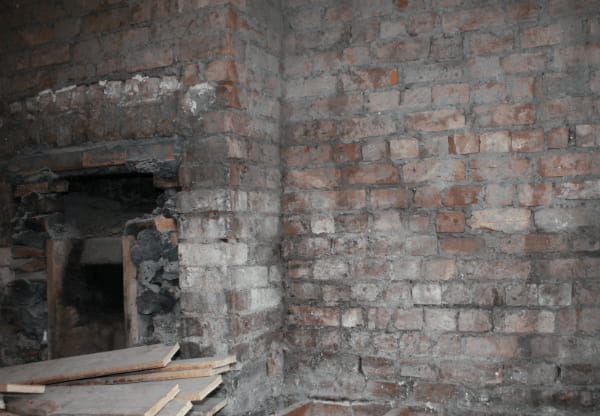
Damp proofing chimney stack
There are a few options when damp proofing a chimney, all options require the removal of the render back to the exposed brick chimney breast. If rising damp is determined as your problem, you will only need to remove the render up to 1m minimum or 300mm above the last sign of damp. Our two most popular solutions are below.
Damp proof membrane
The first option is to install a meshed damp proof membrane to the chimney breast. Applying a DPM directly over the area isolates the salty background from the new finish. Damp proofing membranes such as our PermaSEAL range can be installed straight away, drastically reducing the project time.
Once the membrane has been installed you can then either dot and dab or render directly over it.
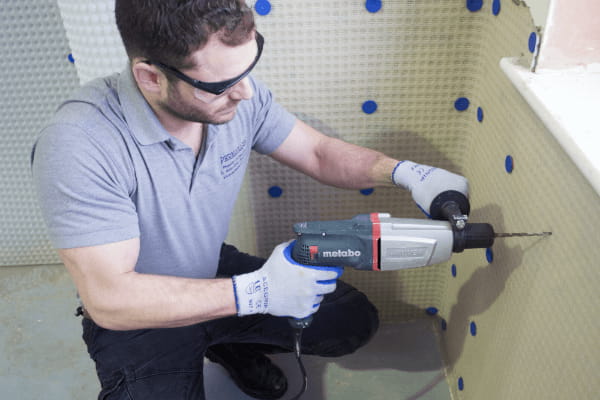
Curing Chimney Damp with PermaSEAL
The second option is to prime and reseal the area using our PermaSEAL damp proofing range.
Firstly, prime the area with PermaSEAL Salt Inhibitor then, whilst damp, apply two coats of PermaSEAL Tanking to the area as per the datasheet then apply a minimum 10mm coat of PermaSEAL Renovating Plaster over the surface to form a salt-resistant barrier. Finally, skim over with Multi Finish Plaster.
